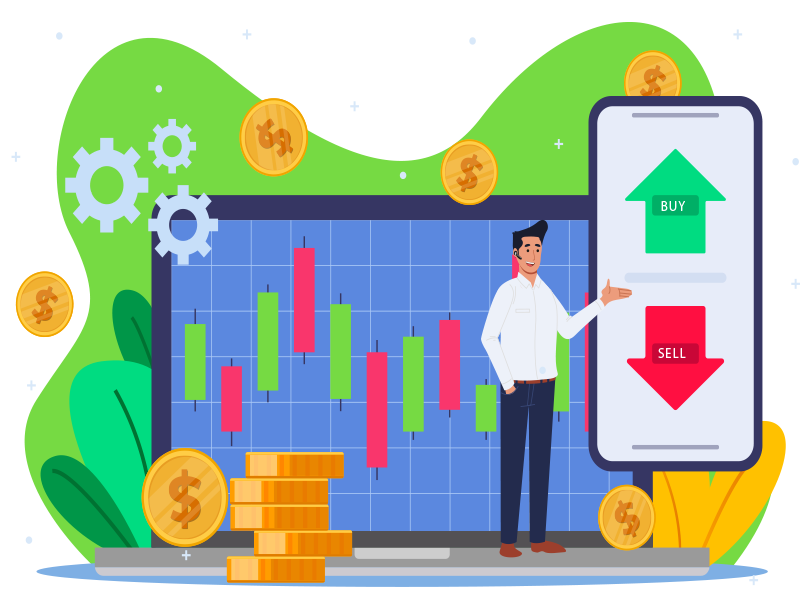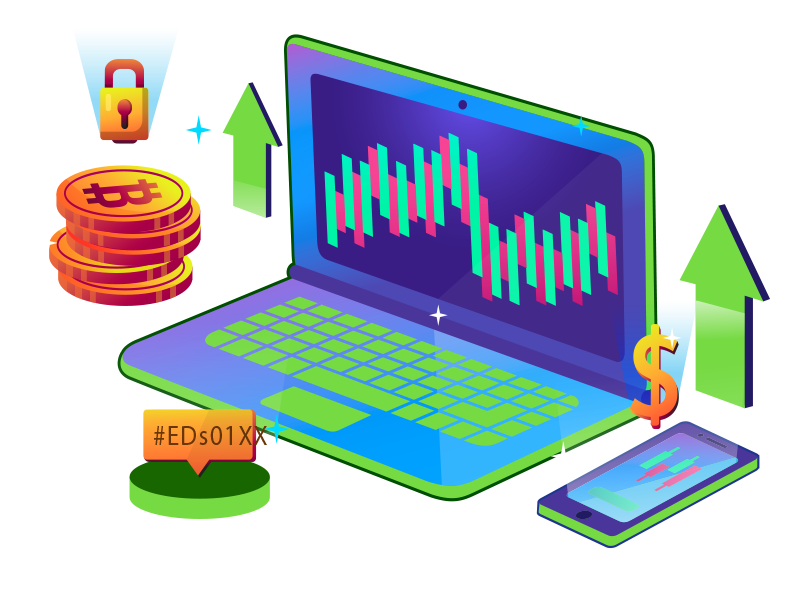


The exchange of one currency for another is called forex trading, sometimes referred to as foreign exchange or FX trading. One of the world's most regularly traded markets is foreign exchange (FX), with daily transactions totalling around $6.6 trillion being made by individuals, corporations, and banks.
Although many foreign exchange transactions are carried out for pragmatic reasons, forex traders primarily convert currencies to make a profit. Before you begin trading forex, be aware that the volume of money that is exchanged daily can cause some currencies' price swings to be particularly unpredictable.
TraderEra is the go-to choice for Forex traders seeking reliability and trustworthiness in a trading platform.

What is a pip in forex?
What is a forex pair?
What are the base and quote currencies?
What is a lot in forex trading?
A pair of currencies that are traded against one another is known as a forex pair. Though there are countless possible pairings, some of the most well-liked ones include the US dollar versus the Japanese yen (USD/JPY), the euro against the US dollar (EUR/USD), and the British pound against the US dollar (GBP/USD).
In a currency pair, the price is always on the right and the base currency is always on the left. The quoted currency is equal to the current quotation price of the pair, which indicates how much of the quote currency will be needed to purchase one base. The base currency is always equal to one. So, when you’re exchanging currency, you’re constantly selling one to get another.
The first listed currency in a currency pair in forex trading is called the base currency, and the second listed currency is called the quote currency. The quantity of the quote currency that is equal to one unit of the base currency is represented by its value, which is always equal to one unit of the base currency. For instance, the base currency in the EUR/USD currency pair is EUR, while the quote currency is USD.
In forex trading, a pip is the smallest unit of price change. It stands for "percentage in point" or "price interest point." It shows how a currency pair's exchange rate has changed.
Four decimal places are supplied for the majority of currency pairings. A one pip movement would occur, for instance, if the EUR/USD currency pair moved from 1.1234 to 1.1235.
The amount of the deal (lot size) and the currency pair being traded determine a pip's value. Generally speaking, one pip corresponds to ten units of the quote currency for a regular lot of 100,000 units of the base currency.
In forex trading, pip values are essential to calculating gains and losses. They help traders by precisely measuring price changes and calculating the possible profits or losses on a deal.
In forex trading, a lot is defined as a specified quantity of currency units. It shows the magnitude of a deal that an individual trader is making.
100,000 units of the base currency make up a standard lot.
10,000 units of the basic currency make up a mini lot.
1,000 units of the base currency make up a micro lot.
A key component of risk management is lot size. Smaller lot sizes lower the risk exposure each transaction, but larger lot sizes increase the possible gains or losses per pip movement.
Forex firms frequently provide traders with the option to select the lot size that best suits their trading style and risk tolerance.
In forex trading, lot sizes and leverage are directly related. Although more leverage lowers the required capital for traders to hold greater positions, it also raises the potential danger. To safeguard their trading accounts, traders must so carefully control lot sizes and leverage.
Forex trading involves the buying and selling of currency pairs. A currency pair consists of two currencies, where one currency is being bought while the other is being sold. For example, in the EUR/USD pair, you're buying euros and selling US dollars.
Each currency pair has two prices: the bid price (the price at which you can sell the base currency) and the ask price (the price at which you can buy the base currency). The difference between these two prices is called the spread, which is how brokers make their profit.
In forex trading, you can either go long (buy) or go short (sell) on a currency pair. Going long means you expect the base currency to strengthen against the quote currency, while going short means you expect it to weaken.
Forex trading often involves the use of leverage, which allows you to control a large position with a relatively small amount of capital. Leverage amplifies both potential profits and losses, so it's essential to use it wisely and manage risk.
Trades in forex are typically done in standard, mini, or micro lots. The value of each pip depends on the lot size and the currency pair being traded. It's important to understand how pip values affect your potential profits and losses.
Successful forex trading requires analyzing the market to make informed trading decisions. This involves both technical analysis (studying price charts and indicators) and fundamental analysis (considering economic factors and news events).
Managing risk is crucial in forex trading. This includes setting stop-loss orders to limit potential losses, using proper lot sizes, and avoiding overleveraging.
Once you've analyzed the market and decided on a trade, you execute the trade through your broker's trading platform. You specify the currency pair, lot size, and whether you're buying or selling.
After entering a trade, it's important to monitor it closely. You can set take-profit and stop-loss orders to automatically exit trades at predetermined levels. It's essential to stick to your trading plan and avoid emotional decision-making.
Forex trading is a skill that requires continuous learning and improvement. Stay updated on market developments, hone your trading strategies, and learn from both successes and failures.
Remember, forex trading carries a high level of risk, and it's possible to lose more than your initial investment. Therefore, it's crucial to approach trading with caution, discipline, and a sound risk management strategy.
People trade forex for various reasons, including the potential for profits,accessibility, flexibility, and the opportunity to participate in a dynamic global market. However, it's essential to approach forex trading with caution, discipline, and a sound understanding of the risks involved.
People trade forex because it provides accessibility, liquidity, profit potential through leverage, and is open 24 hours a day, five days a week, fitting a variety of schedules. The market provides for portfolio diversification outside traditional asset classes, and traders use global factors such as economic data and geopolitical events to guide their selections.
Forex trading, with minimal transaction costs and extensive access to information, including trial accounts for practice, offers prospects for learning and advancement, enticing those seeking financial independence and the potential to engage in a dynamic global market.
Forex trading provides opportunities for continuous learning and personal growth. As you gain experience and knowledge, you can develop your trading skills, refine your strategies, and adapt to changing market conditions.
Forex trading has the potential for substantial gains owing to leverage. Leverage enables you to manage huge holdings with a small amount of cash, magnifying both gains and losses. Traders seek to profit on modest price swings.
The forex market is open 24 hours a day, five days a week, as opposed to stock markets, which have set hours of operation. This flexibility enables traders to engage in trading activity at any time, fitting various time zones and schedules.
Central banks play a crucial role in the forex market. They control monetary policy, including setting interest rates and implementing quantitative easing measures. Changes in monetary policy can influence a country's currency value. For example, if a central bank raises interest rates, it may attract foreign investment, strengthening the currency. Conversely, lowering interest rates may weaken the currency and essentials and stimulate economic growth.
Economic news reports have a significant impact on currency markets. Key indicators such as Gross Domestic Product (GDP), employment data, inflation rates, and trade balances provide insights into a country's economic health. Positive economic data typically strengthens a currency, while negative data may weaken it. Traders closely monitor these reports and react swiftly to news that could affect currency values.
Market sentiment refers to the overall attitude of traders towards a particular currency pair or the forex market as a whole. It is influenced by factors such as economic indicators, geopolitical events, and investor confidence. Positive sentiment may lead to increased buying activity, driving up currency prices, while negative sentiment can cause selling pressure and a decline in currency values. Traders use various tools and analysis techniques to gauge market sentiment and make informed trading decisions.
Learn about forex trading essentials,including currency pairings, pip movements, leverage, and risk management.
Select a reputable forex broker with regulatory oversight, user-friendly interfaces, competitive spreads, and exceptional customer service.
Open a trading account, starting with a demo account,to gain experience and confidence.
Create a detailed trading strategy that includes goals, risk tolerance, techniques, and money management guidelines.
Before moving on to live trading with real money, make sure you practice regularly on a demo account.
Stay informed about market changes, economic news, and trading ideas.
Seek mentoring and connect with the forex trading community for advice and assistance.
Implement excellent risk management measures and practice discipline in trade execution.
During market swings, maintain patience and fortitude while focused on long-term success.